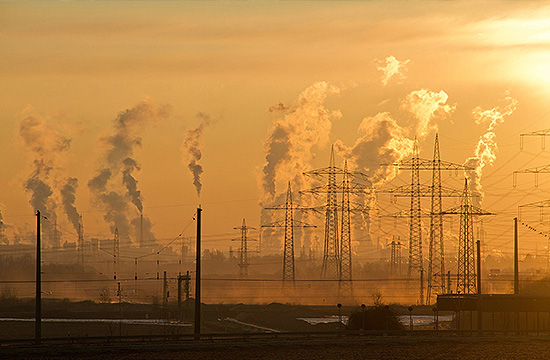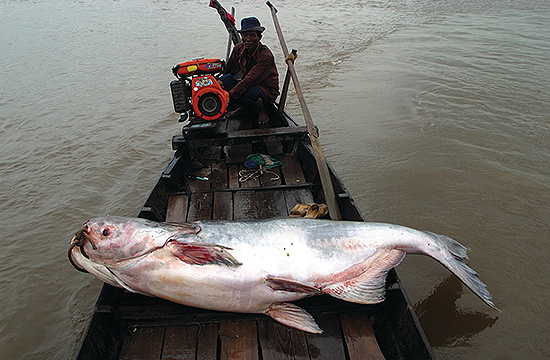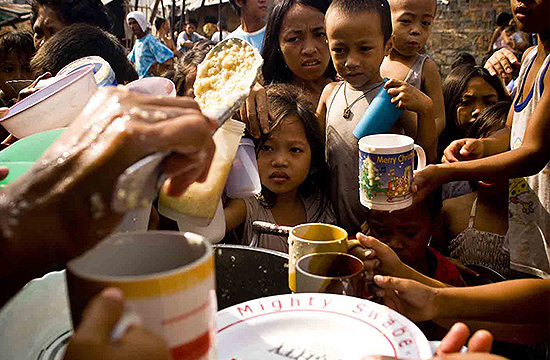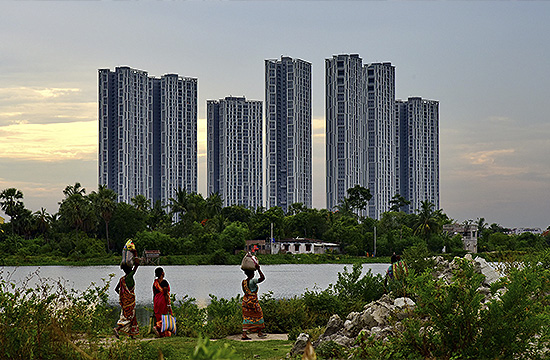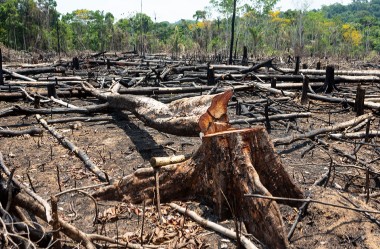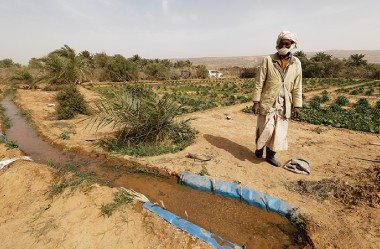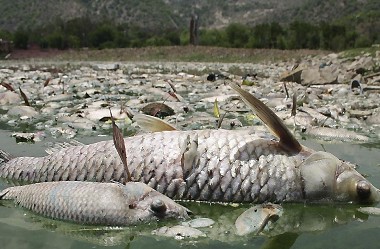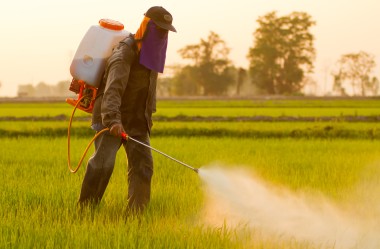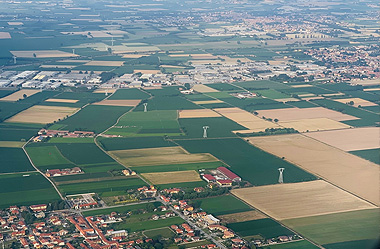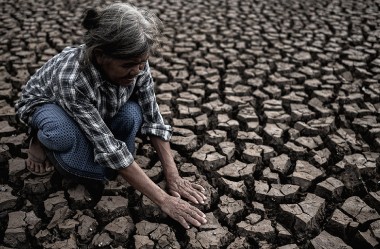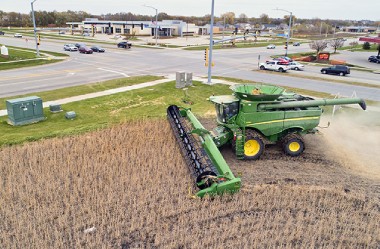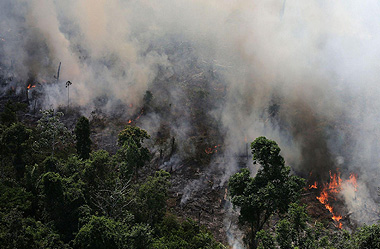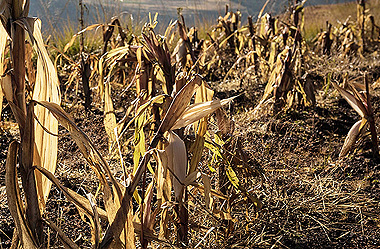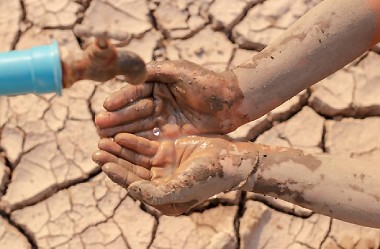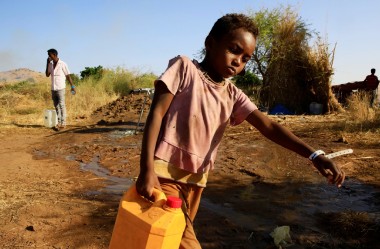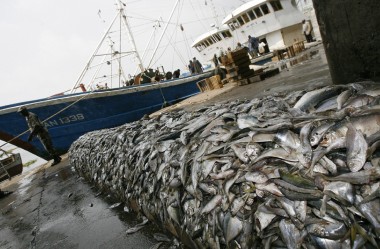According to the Global Footprint Network, by 2030, with a population of 8.5 billion, our consumption patterns could demand the resources of two Earths to sustain us. This highlights the urgent need for sustainable practices to ensure a healthy planet for future generations.
Environmental Pressures:
- Land Degradation: Intensive agricultural practices deplete soil fertility, reducing yields and the need for more land. Deforestation for new farmland contributes to habitat loss and biodiversity decline.
- Water Scarcity: Expanding irrigation depletes freshwater reserves, jeopardizing ecosystems and human needs for clean water. Climate change can further exacerbate water scarcity in some regions.
- Climate Change: Rising temperatures, changing weather patterns, and increased frequency of extreme weather events like droughts and floods disrupt agricultural production and threaten food security, particularly in vulnerable regions.
Our Oceans: A Fragile Balance Under Strain
Oceans cover 71 percent of the planet and are home to 80 percent of life on Earth. However, they are also fragile ecosystems threatened by massive overfishing and pollution.
Nearly 90% of marine fish stocks globally are fully exploited, overexploited, or in a state of collapse, a significant threat to life in the world's oceans. This overfishing and a decline in overall ocean health due to global warming and pollution create a dire situation. A complete collapse of all seafood fisheries could impact food security and marine ecosystems. "This isn't predicted to happen; this is happening now," says Nicola Beaumont, an ecological economist at the Plymouth Marine Laboratory. Fortunately, solutions like sustainable fishing practices, marine protected areas, and reducing pollution offer a path forward to ensure healthy oceans and plentiful fish stocks for future generations.
The ocean teems with life, but its abundance is not limitless. The delicate balance between human consumption and the health of our marine ecosystems is under immense pressure. Current fishing practices threaten the ocean's very future as a food source.
Threats to Marine Resources:
- Overfishing: Unsustainable fishing practices deplete fish stocks, jeopardizing the health of marine ecosystems and threatening the livelihoods of millions who depend on fisheries.
- Ocean Acidification: Increased carbon dioxide emissions from human activity acidify the oceans, harming marine organisms like shellfish and disrupting food chains.
- Ocean Pollution: Plastics, chemicals, and agricultural runoff pollute the ocean, harming marine life and habitats.
Tipping Points
When essential factors like access to water, arable land, and biodiversity are disrupted beyond a specific limit, the food production and distribution systems become unsustainable. This jeopardizes the availability of nutritious food for populations, leading to widespread food insecurity.
-
Arable Land Depletion: The expansion of agriculture to meet growing food demands leads to converting natural ecosystems into farmland. This process contributes to deforestation, soil erosion, loss of biodiversity, and the degradation of valuable habitats, ultimately reducing the availability of arable land for food production.
-
Water Scarcity: Agriculture accounts for a significant portion of global freshwater usage. Water scarcity, exacerbated by factors like climate change and inefficient irrigation practices, poses a threat to agricultural productivity and food security. Managing water resources sustainably is crucial for ensuring a secure food supply.
-
Soil Degradation: Intensive agricultural practices, such as heavily using chemical fertilizers and pesticides, can degrade soil quality over time. Soil erosion, salinization, and nutrient depletion reduce the productivity of agricultural land, impacting crop yields and the long-term sustainability of food production.
-
Ecological Footprint: The ecological footprint of food production refers to the environmental impact of agricultural activities, including greenhouse gas emissions, water usage, energy consumption, and land use. Unsustainable farming practices contribute to a large ecological footprint, leading to environmental degradation and resource depletion.
-
Climate Change Resilience: Climate change poses significant challenges to global food security by altering growing conditions, increasing the frequency of extreme weather events, and disrupting ecosystems. Building resilience to climate change impacts, such as droughts, floods, and heat waves, is essential for ensuring a reliable and sustainable food supply.
-
Biodiversity Loss: Intensive agriculture practices often prioritize a few high-yielding crop varieties at the expense of biodiversity. The loss of biodiversity in agroecosystems can reduce ecosystem resilience, disrupt pollination services, and make food production more vulnerable to pests and diseases, threatening food security.
-
Food Waste and Loss: Substantial amounts of food are lost or wasted throughout the supply chain, from production to consumption. Addressing food waste and loss is critical for optimizing resource use, reducing the ecological footprint of food production, and ensuring that food reaches those in need.
Fish Feed Ingredients
Finding sustainable and protein-rich alternatives is necessary to expand the feed formulation (fish food ingredients alternatives). The reliance on fishmeal and fish oil in traditional feed production exacerbates concerns related to overfishing, placing stress on aquatic ecosystems and underscoring the urgency to seek alternative protein sources for aquafeeds. This dilemma arises as the aquaculture industry strives to increase food production, especially animal protein, amidst unsustainable industrialized agricultural practices. Integrating organic aquaculture into organic agriculture is valuable to mitigating this challenge and working towards a more sustainable future. This approach contributes to climate change mitigation and enhances resilience by promoting environmentally friendly practices across aquaculture and agriculture sectors. By emphasizing the ecological sustainability of production methods and integrating cutting-edge technologies, the industry can revolutionize the food production sector to align with environmental and sustainable principles.
The increasing volumes of fish feed required (nutrition) to meet the expanding pace of aquaculture production further accentuate the need for innovative protein alternatives and sustainable feed ingredients. As aquaculture accelerates to meet heightened demands driven by population growth and changing dietary patterns, the quest for cost-effective, protein-rich ingredients becomes imperative. Embracing organic practices, valorizing by-products in feed formulations, and identifying sustainable protein sources are essential strides toward achieving growth in aquaculture production while addressing feed insecurity concerns and the growing demand for protein in the animal meat market.
Integrating Organic Practices to Address Protein Demand Challenges and Climate Resilience
In light of climate change impacts on crop yields, shifts in supply chains, and escalating weather-related challenges, adopting organic aquaculture and agriculture practices enhances resilience and supports the industry in navigating complex environmental variables while ensuring stability in the feed supply chain. This holistic approach reflects a commitment to ecologically sustainable practices, technological innovation, and a resilient food production system that prioritizes environmental conservation and sustainability for a more secure and sustainable future.
Adaptation is not a luxury – it's a necessity. By investing in research, developing climate-resilient crops, implementing water-saving technologies, and transforming our agricultural practices, we can mitigate the impact of climate change on food security. The future of food depends on our ability to adapt, innovate, and ensure a sustainable food system for generations to come.

